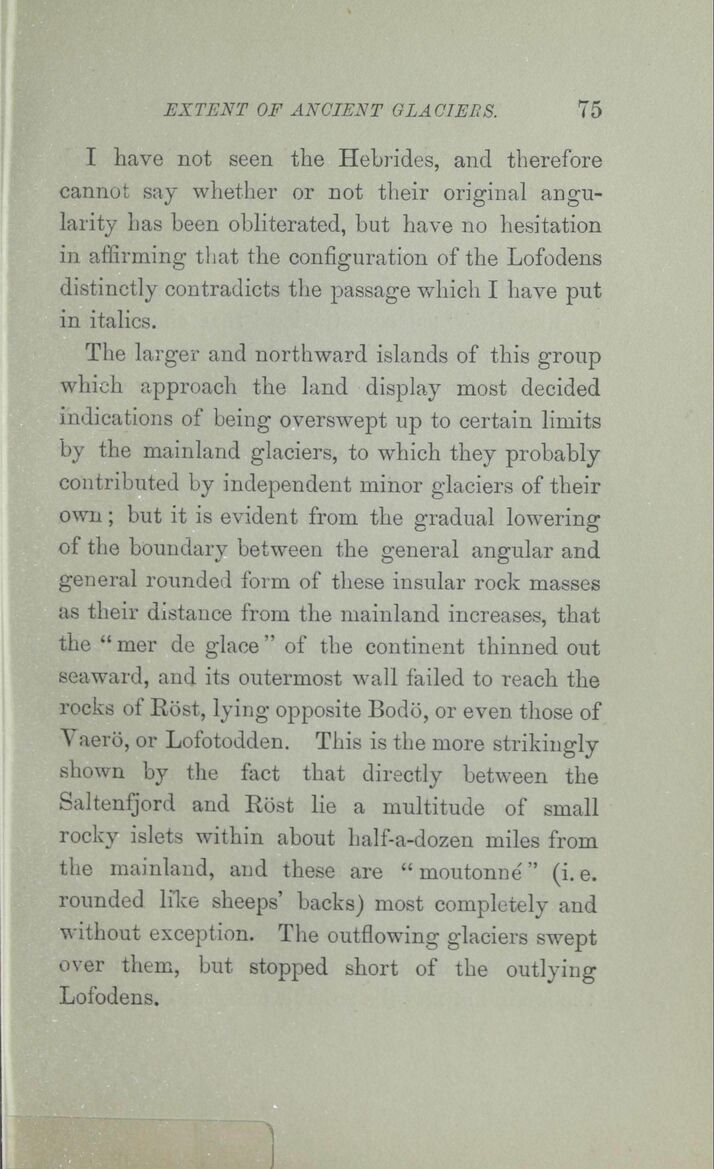
Full resolution (JPEG) - On this page / på denna sida - Sidor ...

<< prev. page << föreg. sida << >> nästa sida >> next page >>
Below is the raw OCR text
from the above scanned image.
Do you see an error? Proofread the page now!
Här nedan syns maskintolkade texten från faksimilbilden ovan.
Ser du något fel? Korrekturläs sidan nu!
This page has been proofread at least once.
(diff)
(history)
Denna sida har korrekturlästs minst en gång.
(skillnad)
(historik)
I have not seen the Hebrides, and therefore
cannot say whether or not their original
angularity has been obliterated, but have no hesitation
in affirming that the configuration of the Lofodens
distinctly contradicts the passage which I have put
in italics.
The larger and northward islands of this group
which approach the land display most decided
indications of being overswept up to certain limits
by the mainland glaciers, to which they probably
contributed by independent minor glaciers of their
own; but it is evident from the gradual lowering
of the boundary between the general angular and
general rounded form of these insular rock masses
as their distance from the mainland increases, that
the “mer de glace” of the continent thinned out
seaward, and its outermost wall failed to reach the
rocks of Röst, lying opposite Bodö, or even those of
Vaerö, or Lofotodden. This is the more strikingly
shown by the fact that directly between the
Saltenfjord and Röst lie a multitude of small
rocky islets within about half-a-dozen miles from
the mainland, and these are “moutonné” (i. e.
rounded like sheeps’ backs) most completely and
without exception. The outflowing glaciers swept
over them, but stopped short of the outlying
Lofodens.
<< prev. page << föreg. sida << >> nästa sida >> next page >>